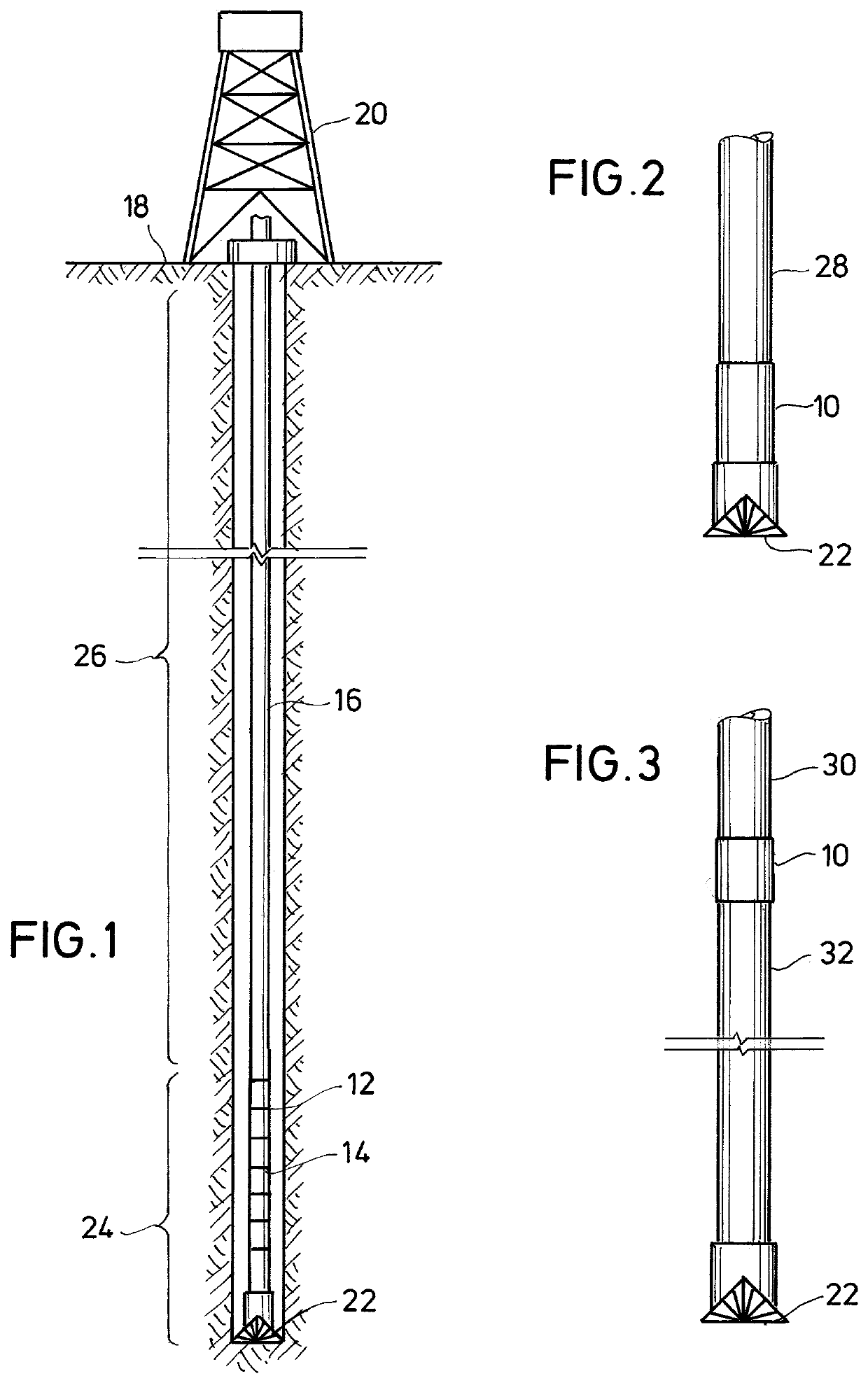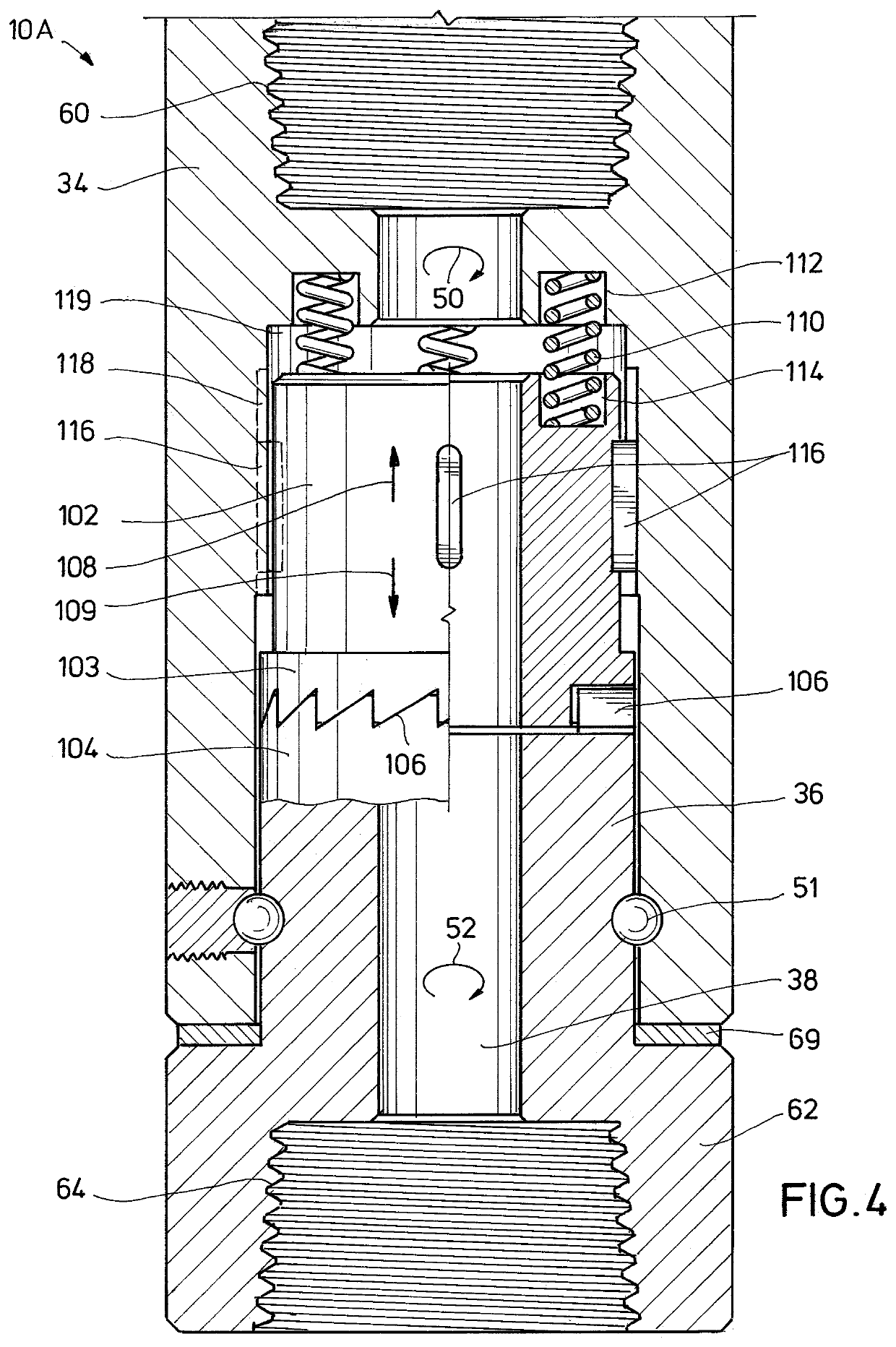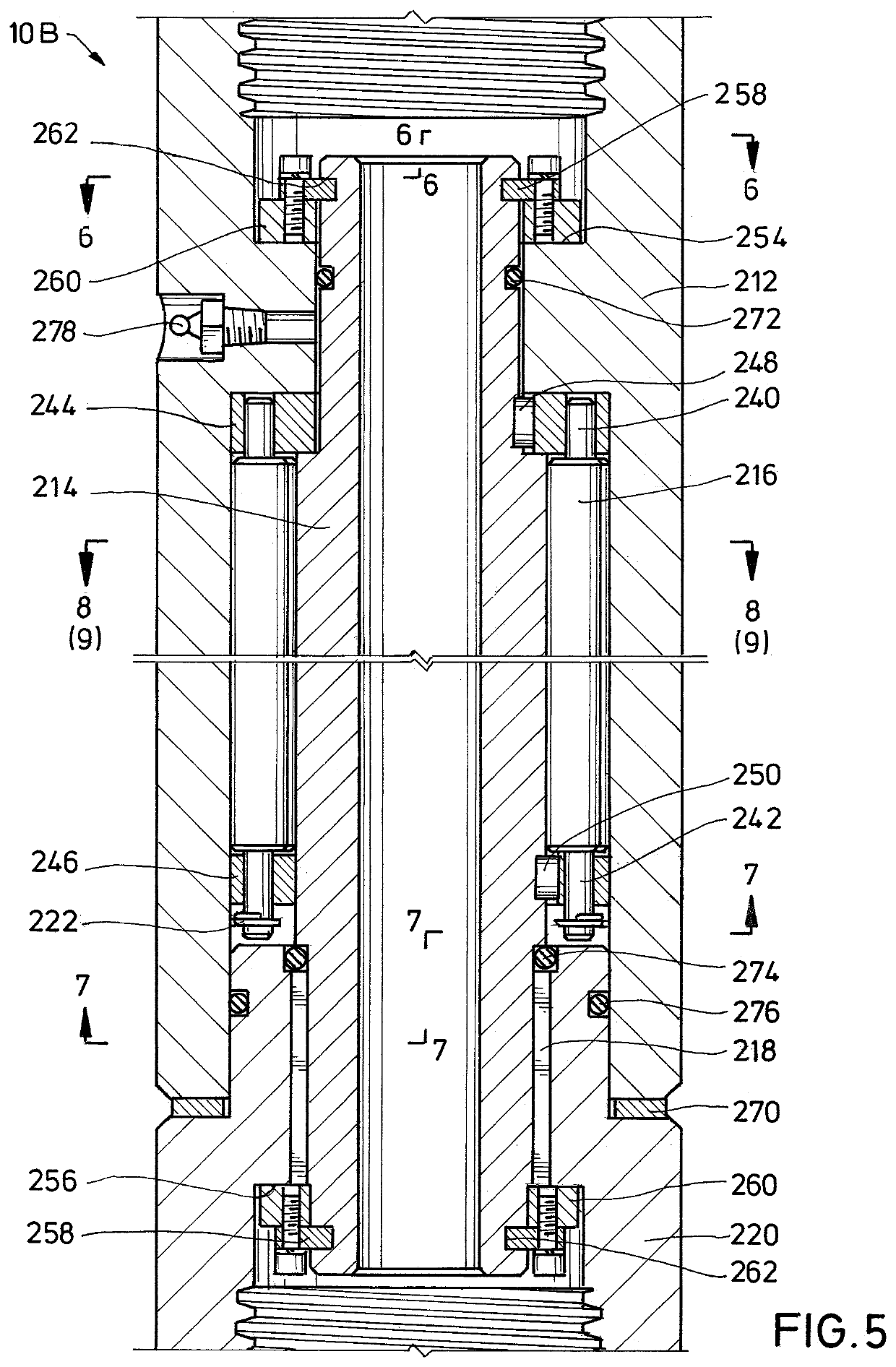Downhole ratchet mechanism and method
- Summary
- Abstract
- Description
- Claims
- Application Information
AI Technical Summary
Benefits of technology
Problems solved by technology
Method used
Image
Examples
Embodiment Construction
[0050]FIG. 1 shows one or more slip mechanisms 10 as described below mounted at various positions 12, 14 in the drill string 16. In other words, the present invention may use a plurality of slip mechanisms inserted at strategic positions or may use a single slip mechanism 10 for insertion at a strategic position as discussed herein. Slip mechanisms may also be referred to herein as ratchet mechanisms, clutches, or the like. There may be only one slip mechanism, but due to the low cost of some embodiments, it would also be possible to use more than one. The drill string 16 extends from an earth surface 18 to the drill bit 22. Surface drive 20 applies torque to rotate the drill sting to rotate the bit. Alternatively, the bit 22 may be driven by a downhole motor.
[0051]Various embodiments of a slip mechanism are shown in FIGS. 4, 5, and 12. The slip mechanisms allow rotation of an inner member with respect to an outer member when the inner member spins faster than the outer member. Othe...
PUM
 Login to View More
Login to View More Abstract
Description
Claims
Application Information
 Login to View More
Login to View More - R&D
- Intellectual Property
- Life Sciences
- Materials
- Tech Scout
- Unparalleled Data Quality
- Higher Quality Content
- 60% Fewer Hallucinations
Browse by: Latest US Patents, China's latest patents, Technical Efficacy Thesaurus, Application Domain, Technology Topic, Popular Technical Reports.
© 2025 PatSnap. All rights reserved.Legal|Privacy policy|Modern Slavery Act Transparency Statement|Sitemap|About US| Contact US: help@patsnap.com



